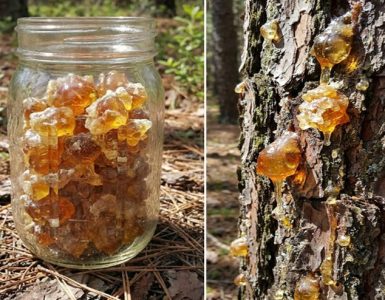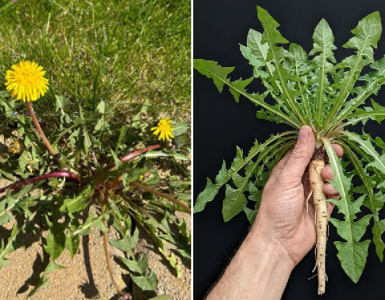Tall fescue (Festuca arundinacea) is a popular cool-season grass widely used in lawns, pastures, and sports fields. Known for its durability, adaptability, and deep green color, tall fescue thrives in a range of environments and is valued for its ability to withstand tough conditions, including drought, heat, and heavy foot traffic. Whether you’re looking to establish a lush lawn or create resilient pastureland, tall fescue may be the perfect choice for your needs. Here’s everything you need to know about tall fescue, from its characteristics and benefits to tips for successful planting and maintenance.
What is Tall Fescue?
Tall fescue is a perennial grass that belongs to the cool-season grass family. It is known for its coarse texture, upright growth habit, and deep, extensive root system. Originally native to Europe, tall fescue was introduced to North America and has since become one of the most widely used turf grasses, particularly in the transition zone (the region where cool-season and warm-season grasses overlap).
Key Features of Tall Fescue:
Cool-season grass: Grows actively during the spring and fall when temperatures are cooler.
Coarse texture: Tall fescue has a wider blade compared to finer turfgrasses like Kentucky bluegrass.
Deep root system: This allows the grass to access water and nutrients deep in the soil, making it drought-resistant.
Bunch-forming growth: Tall fescue grows in clumps rather than spreading through runners or rhizomes.
Benefits of Tall Fescue
Tall fescue offers numerous benefits for lawns, pastures, and sports fields due to its hardiness, adaptability, and low maintenance requirements.
Drought Tolerance
Tall fescue’s deep root system allows it to access water from deeper in the soil, making it highly drought-tolerant compared to other cool-season grasses. This makes it an excellent choice for areas with inconsistent rainfall or regions prone to dry spells.
Heat and Cold Resistance
Unlike some cool-season grasses that struggle in extreme heat, tall fescue can withstand higher temperatures without going dormant. Additionally, it remains green and active during cooler months, making it a versatile grass for areas with a range of climates.
Disease and Pest Resistance
Tall fescue is generally resistant to many common lawn diseases and pests, which reduces the need for chemical treatments and makes it easier to maintain a healthy lawn.
Durable and Resilient
This grass is well-suited for areas with heavy foot traffic, making it an ideal option for playgrounds, sports fields, and residential lawns. It holds up well under stress, thanks to its robust growth and ability to recover quickly from wear.
Low Maintenance
Tall fescue requires less fertilization than other grasses, and its drought tolerance means less frequent watering is needed. Once established, it can thrive with minimal care.
Types of Tall Fescue
There are two main types of tall fescue: traditional and turf-type tall fescue.
Traditional Tall Fescue
Traditional varieties, like Kentucky 31, are known for their hardiness and ability to grow in less-than-ideal conditions. While they offer excellent durability, they tend to have a coarser texture and less aesthetic appeal compared to turf-type varieties.
Turf-Type Tall Fescue
Turf-type tall fescue varieties have been developed to have a finer texture and more uniform appearance, making them ideal for residential lawns and golf courses. These varieties offer the same resilience and drought tolerance as traditional tall fescue but with improved aesthetics and density.
- Planting Tall Fescue
To successfully grow tall fescue, it’s important to follow proper planting and seeding techniques. - Choose the Right Time
The best time to plant tall fescue is during its peak growing periods in the early fall or spring. Fall is often preferred because the cooler weather and adequate moisture provide the perfect conditions for seed germination and root development. - Prepare the Soil
Before planting, prepare the soil by removing weeds, rocks, and other debris. Loosen the soil to a depth of about 4-6 inches to promote root penetration. Test the soil to ensure it has a pH level between 5.5 and 7.0, as tall fescue prefers slightly acidic to neutral soil. - Seed Properly
Broadcast the tall fescue seeds evenly over the prepared soil. For best results, aim for a seeding rate of 6-8 pounds per 1,000 square feet. After spreading the seed, lightly rake the soil to cover the seeds with about 1/4 inch of soil. - Water Regularly
Water the newly planted seeds frequently to keep the soil consistently moist during the germination process. Avoid overwatering, as soggy soil can lead to seed rot. Once the grass establishes, you can reduce the frequency of watering. - Fertilize
Apply a starter fertilizer after planting to give the new grass a nutrient boost. Once established, fertilize your lawn 1-2 times per year, preferably in the spring and fall, to maintain healthy growth. - Maintaining Tall Fescue
Maintaining tall fescue is relatively easy, thanks to its drought tolerance and low nutrient requirements. However, proper care will ensure that your lawn or pasture remains lush and healthy.
1.Mowing
Mow tall fescue regularly to maintain a height of 2.5 to 4 inches. Avoid cutting more than one-third of the grass blade length at a time, as this can stress the plant and lead to thinning.
2.Watering
Tall fescue is drought-tolerant, but it still needs adequate water to thrive. Water your lawn deeply and infrequently, providing about 1 inch of water per week during dry periods. Deep watering encourages root growth and helps the grass resist drought.
3.Fertilizing
Fertilize tall fescue twice a year: once in early spring and again in the fall. Avoid excessive fertilization, as it can lead to rapid, weak growth and make the grass more susceptible to disease.
4.Weed Control
While tall fescue naturally crowds out many weeds due to its dense growth, some weed control may still be necessary. Apply pre-emergent herbicides in early spring to prevent crabgrass and other weeds from taking root.
5.Aeration
Aerating your lawn in the fall helps improve soil structure, allowing water, nutrients, and air to reach the grass’s root system. This encourages healthier, more vigorous growth.
6.Potential Issues with Tall Fescue
Though tall fescue is a hardy and versatile grass, there are a few potential challenges to keep in mind:
Thatch Buildup: Over time, a thick layer of thatch (dead grass material) can accumulate, limiting water and nutrient absorption. Regular aeration can help prevent this issue.
Overseeding: Tall fescue is a bunch-forming grass, meaning it doesn’t spread through rhizomes or stolons. You may need to overseed periodically to maintain density in your lawn.
Brown Patch Disease: In hot, humid conditions, tall fescue may be susceptible to fungal diseases like brown patch. Proper watering practices and good air circulation can help reduce the risk.
Tall fescue is a resilient, low-maintenance grass that offers numerous benefits for lawns, pastures, and sports fields. Its adaptability to various conditions, including drought and heavy foot traffic, makes it a versatile choice for many regions. By understanding the characteristics, planting techniques, and care requirements of tall fescue, you can enjoy a lush, durable lawn or pasture that thrives year-round.






Add comment